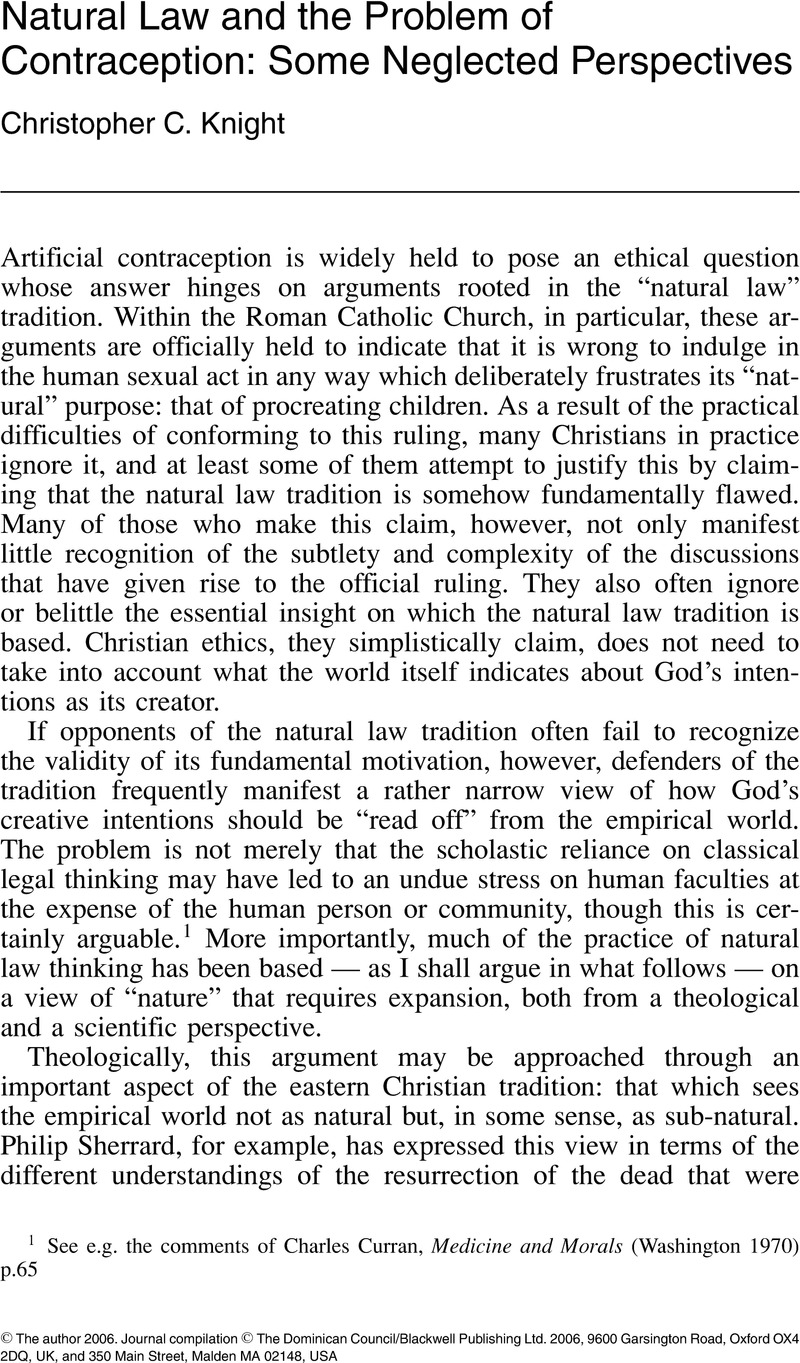No CrossRef data available.
Published online by Cambridge University Press: 01 January 2024

1 See e.g. the comments of Curran, Charles, Medicine and Morals (Washington 1970) p.65Google Scholar
2 Sherrard, Philip, Christianity and Eros: Essays on the Theme of Sexual Love (London, SPCK, 1976) p.40Google Scholar. (The “garments of skin” here refer to those which Adam and Eve took to wearing after the fall. These were, in eastern patristic thinking, often interpreted as Sherrard indicates here.)
3 Lossky, Vladimir, The Mystical Theology of the Eastern Church (Cambridge, James Clarke, 1957) p.101Google Scholar
4 Sherrard op.cit. p.8
5 Ibid. pp.13f.
6 Ibid.
7 Ibid., p. 14
8 Ibid.
9 Ibid. p. 18
10 Ibid. p. 25
11 Ibid. pp. 25f.
12 Ibid. p.26
13 This “medicinal” aspect of the patristic concept of the “garments of skin” is explored, for example, in Nellas, Panayiotis, Deification in Christ: Orthodox Perspectives on the Nature of the Human Person tr. Russell, Norman (Crestwood N.Y., St.Vladimir's Seminary Press, 1997)Google Scholar ch.2.
14 See e.g. Louth, Andrew, “The Cosmic Vision of St.Maximos the Confessor”, in Clayton, Philip and Peacocke, Arthur, eds., In Whom We Live and Move and Have Our Being: Panentheistic Reflections on God's Presence in a Scientific World (Grand Rapids, Eerdmans, 2004) p.189Google Scholar
15 Schmemann, Alexander, The Eucharist: Sacrament of the Kingdom (Crestwood, St.Vladimir's Seminary Press, 1987) pp.33fGoogle Scholar.
16 For a brief account of Sherrard's view of the sacramental, antinomical character of the created order as we experience it, see Sherrard, Philip, “The Sacrament” in Philippou, A.J., ed., The Orthodox Ethos: Essays in Honour of the Centenary of the Greek Orthodox Archdiocese of North and South America (Oxford, Holywell Press, 1964) pp. 133ffGoogle Scholar.
17 Sherrard, Christianity and Eros op.cit. pp.76f.
18 Ibid. p. 26
19 See in particular Sherrard, Philip, The Rape of Man and Nature (Ipswich, Golgonooza, 1986)Google Scholar.
20 See e.g. the comments in Midgley, Mary, Beast and Man: The Roots of Human Nature, revised edn. (London, Routledge, 1995) p.39Google Scholar
21 Eibl-Eibesfeldt, Irenäus, Love and Hate tr. Strachan, Geoffrey (London, Methuen, 1971) p.143Google Scholar (See also n.22 below.)
22 Eibl-Eibesfeldt (ibid.) notes in this respect how psychologists, while right in suggesting links between sexuality and other aspects of life, are often wrong in their explication of it. Thus, for example, after noting (see n.21) the link between sexual and parenting behavioural patterns, he notes that Freud, “in a strikingly topsy-turvy interpretation, once observed that a mother would certainly be shocked if she realized how she was lavishing sexual behaviour patterns on her child. In this case Freud got things back to front. A mother looks after her children with the actions of parental care; these she also uses to woo her husband..”
23 See e.g. Knight, Christopher C., Wrestling With the Divine: Religion, Science, and Revelation (Minneapolis, Fortress, 2001) ch.4Google Scholar
24 Sherrard, Christianity and Eros op.cit. remarks, for example, that a fully sexualized love “does not necessarily have any so-called carnal (or genital) expression: not because the man and the woman have taken any vow of virginity or regard celibacy as a superior state of existence, but simply because the kind of communion they experience makes such expression superfluous - a descent into a lower key” (p.3).
25 Aspects of the earlier history of this approach are summarized in TeSelle, Eugene, “Divine Action: The Doctrinal Tradition” in Hebblethwaite, Brian and Henderson, Edward, eds., Divine Action: Studies Inspired by the Philosophical Theology of Austin Farrer (Edinburgh, T and T Clark, 1990) pp.71ffGoogle Scholar.
26 Kallistos Ware, Bishop of Diokleia, “God Immanent yet Transcendent: The Divine Energies according to St.Gregory Palamas” in Clayton and Peacocke op.cit. p.160.
27 Lossky op.cit. p.101
28 Knight, Christopher C., “Divine Action: A Neo-Byzantine Model”: International Journal for Philosophy of Religion 58 (2005) pp. 181ffCrossRefGoogle Scholar.
29 Louth op. cit. p. 189
30 Ibid. p.195
31 Knight, Christopher C., “Naturalism and Faith: Friends or Foes?”, Theology CVIII (2005) pp.254ffCrossRefGoogle Scholar. expands in this respect on arguments presented in Knight, “Wrestling..” op.cit